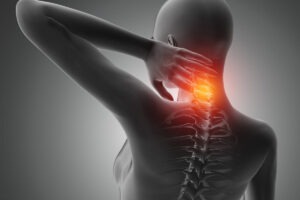Back pain, particularly chronic lumbar radiculopathy (commonly known as sciatica), affects millions of individuals worldwide. It can be debilitating, causing sharp pain, tingling, or numbness that radiates from the lower back to the legs. While surgery is often considered for severe cases, many patients are now exploring non-surgical treatments like Pulsed Radiofrequency Ablation (PRFA) for effective, minimally invasive pain relief.

What is Chronic Lumbar Radiculopathy?
Lumbar radiculopathy, or sciatica, occurs when nerves in the lower spine become compressed or irritated, often due to herniated discs, spinal stenosis, or degenerative disc disease. Common symptoms include:
- Sharp, radiating pain along the sciatic nerve path.
- Tingling or numbness in the legs or feet.
- Weakness in the lower extremities.
If untreated, it can lead to chronic pain and reduced quality of life.

Pulsed Radiofrequency Ablation (PRFA): An Innovative Solution
PRFA is a cutting-edge, non-surgical treatment designed to alleviate chronic nerve pain. Unlike conventional radiofrequency ablation, which uses continuous heat to destroy nerve tissue, PRFA uses intermittent electrical pulses to modulate nerve signals without causing significant damage to the nerve.

How Does PRFA Work?
- Precision Targeting: Using fluoroscopic or ultrasound guidance, a small probe is positioned near the affected nerve.
- Electrical Pulses: The probe delivers low-intensity electrical currents that disrupt pain signals while preserving nerve integrity.4
- Pain Relief: By modulating the nerve’s activity, PRFA reduces pain and inflammation effectively.
This procedure is minimally invasive, typically performed on an outpatient basis, and requires only local anesthesia.

Benefits of PRFA for Chronic Lumbar Radiculopathy
- Non-Destructive: Unlike continuous RFA, PRFA preserves nerve function while reducing pain.2
- Minimally Invasive: No surgical incisions or long recovery periods are required.3
- Effective Pain Relief: Studies show PRFA can provide long-term relief for patients with sciatica.
- Faster Recovery: Patients can resume normal activities within a few days.
- Suitable for High-Risk Patients: Ideal for those who cannot undergo surgery due to medical conditions.

PRFA at Algos Pain Clinic
At Algos Pain Clinic in Bangalore, PRFA is performed by experienced pain specialists using state-of-the-art equipment. The treatment process includes:
- Comprehensive Evaluation: Detailed assessments to determine the root cause of back pain.
- Personalized Treatment Plans: Tailored PRFA protocols for optimal outcomes.
- Follow-Up Care: Guidance on rehabilitation and pain management to maintain results.

Is PRFA Right for You?
PRFA is particularly effective for patients who:
- Suffer from chronic sciatica or lumbar radiculopathy.
- Have not found relief through medications or physiotherapy.
- Are seeking a non-surgical alternative for long-term pain management.

Conclusion
Chronic lumbar radiculopathy can significantly impact daily life, but innovative treatments like PRFA offer hope for effective, non-surgical relief. At Algos Pain Clinic, we specialize in advanced pain management solutions to help you regain your mobility and quality of life.
If you’re struggling with back pain or sciatica, contact us today to learn more about PRFA and other treatment options. Take the first step toward a pain-free life!

References
- Chang MC, Cho YW, Ahn SH. Compari- son between bipolar pulsed radiofre- quency and monopolar pulsed radiofre- quency in chronic lumbosacral radicu- lar pain: A randomized controlled trial. Medicine (Baltimore) 2017; 96:e6236.
- Podhajski RJ, Sekiguchi Y, Kikuchi S, My- ers RR. The histologic effects of pulsed and continuous radiofrequency lesions at 42°C to rat dorsal root ganglion and sciatic nerve. Spine 2005; 30:1008-1013.
- Sluijter ME, Cosman ER, Rittmann WB, van Kleef M. The effects of pulsed radio- frequency fields applied to the dorsal root ganglion: A preliminary report. Pain Clin 1998; 11:109-117.
- Vallejo R, Tilley DM, Williams J, Labak S, Aliaga L, Benyamin RM. Pulsed ra- diofrequency modulates pain regula- tory gene expression along the noci- ceptive pathway. Pain Physician 2013; 16:E601-E613.





